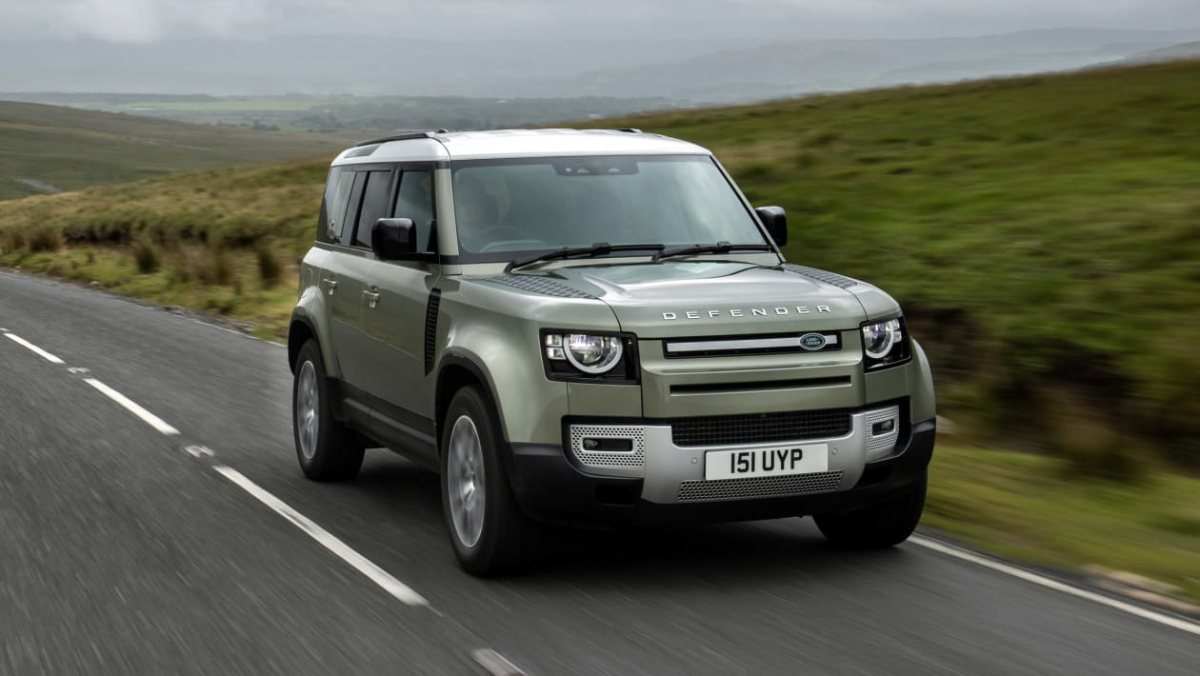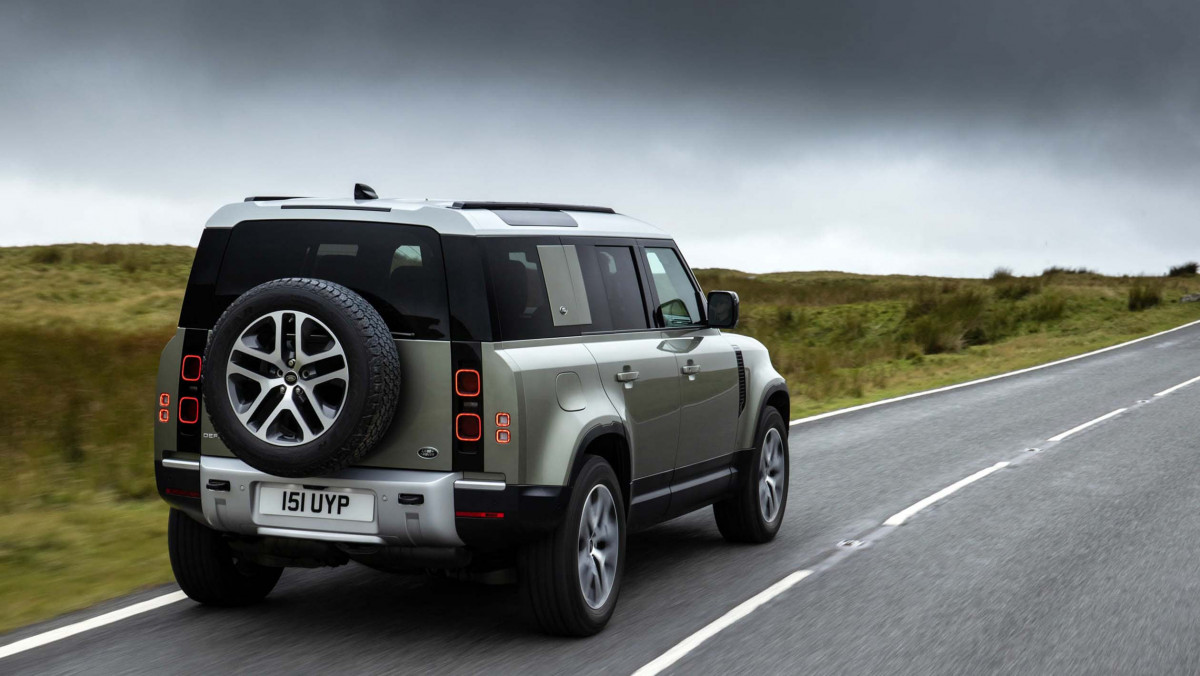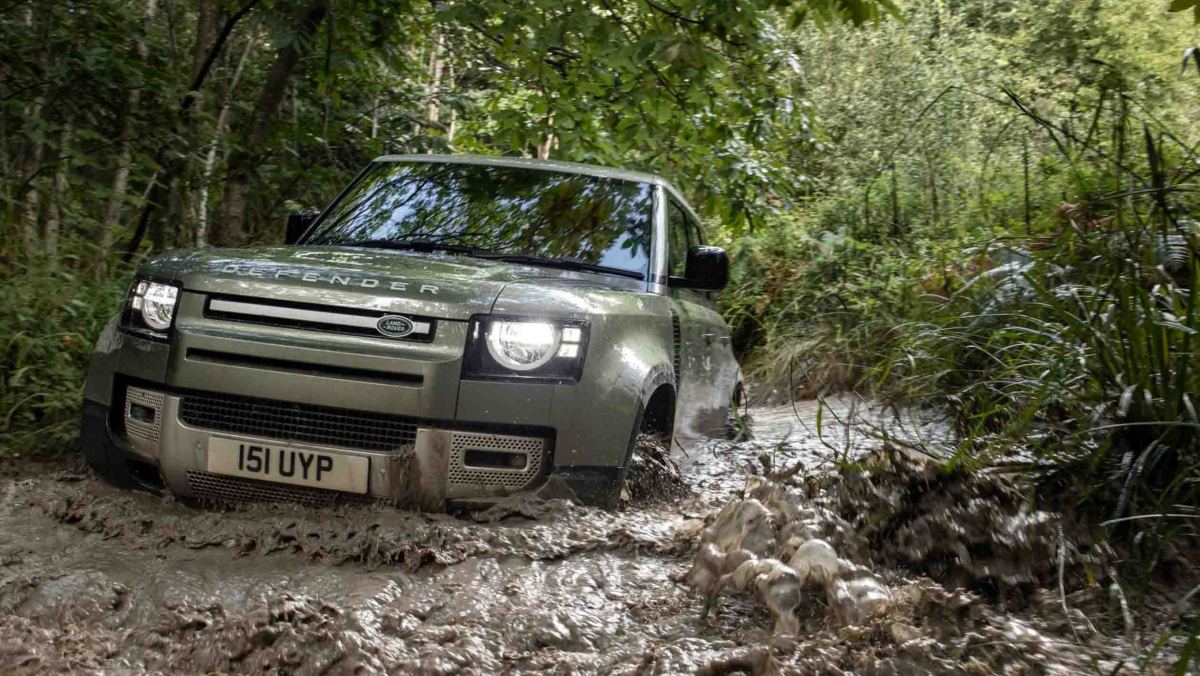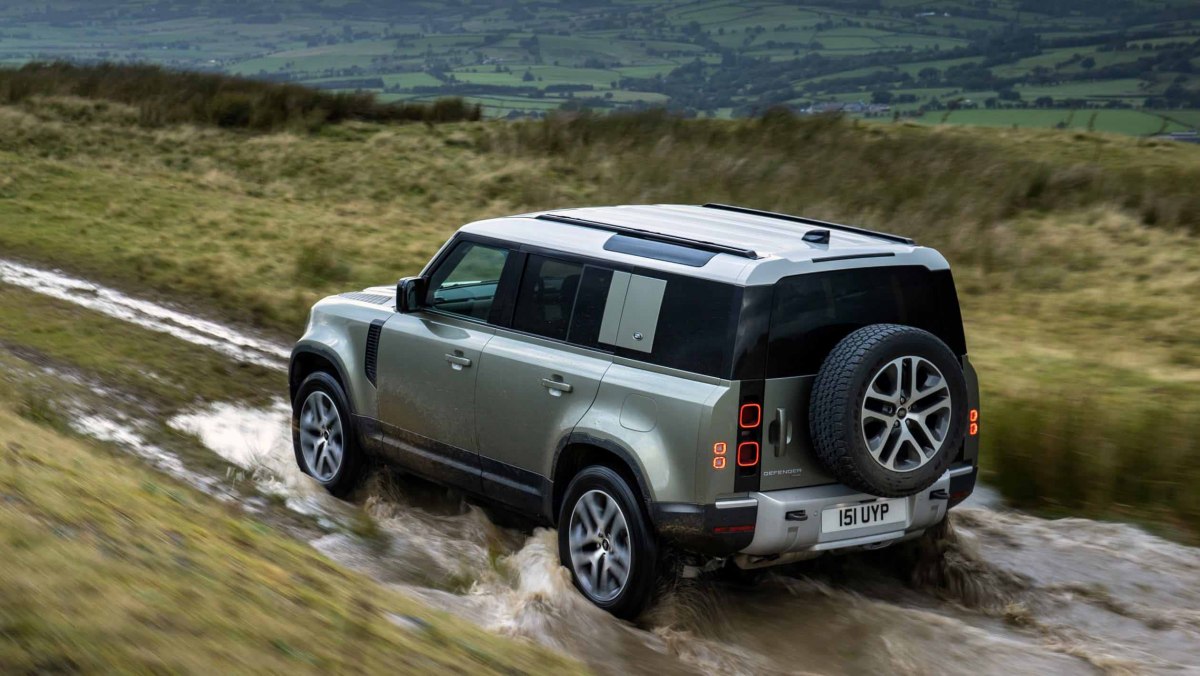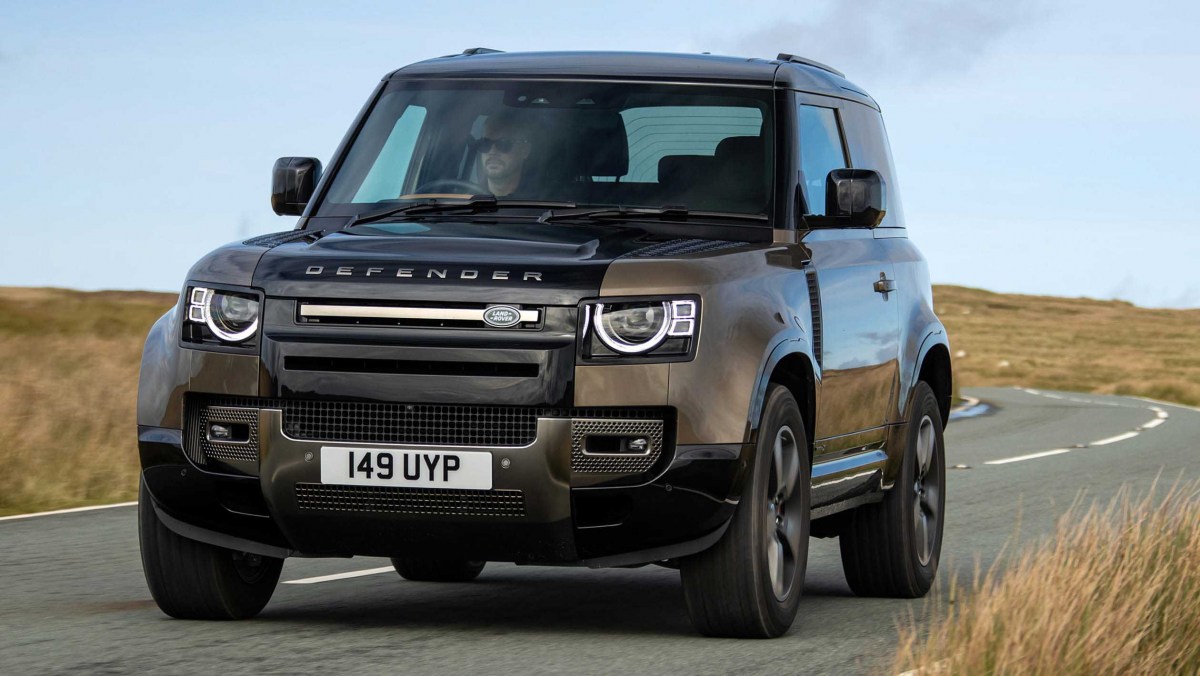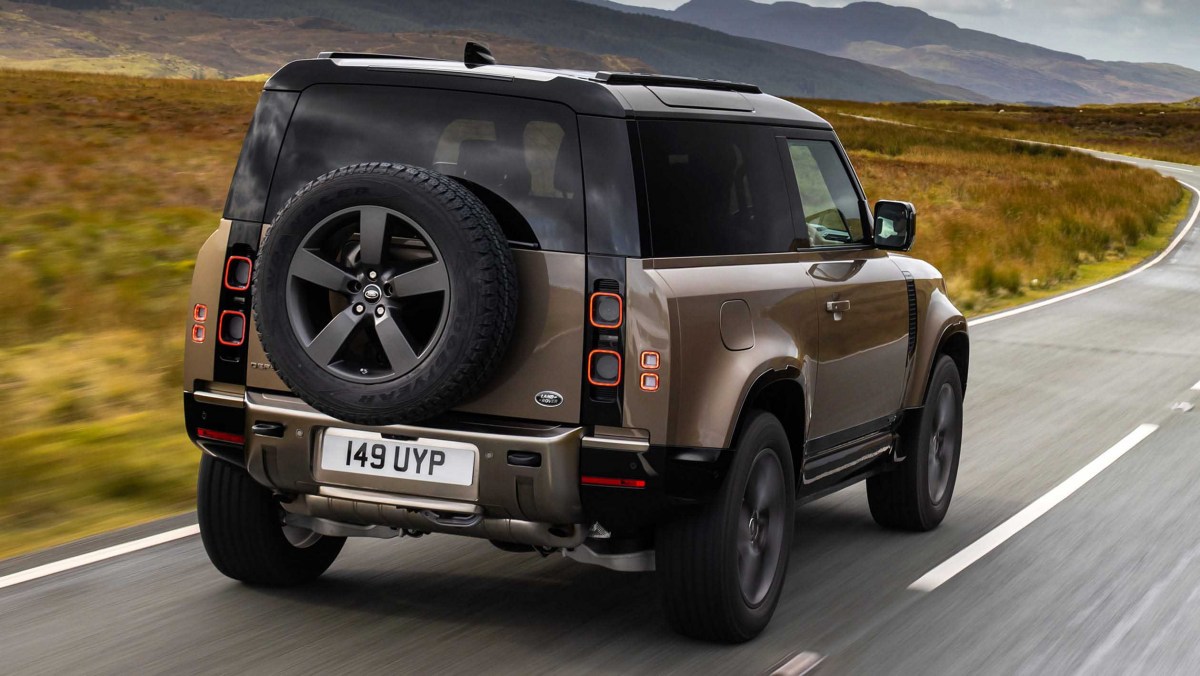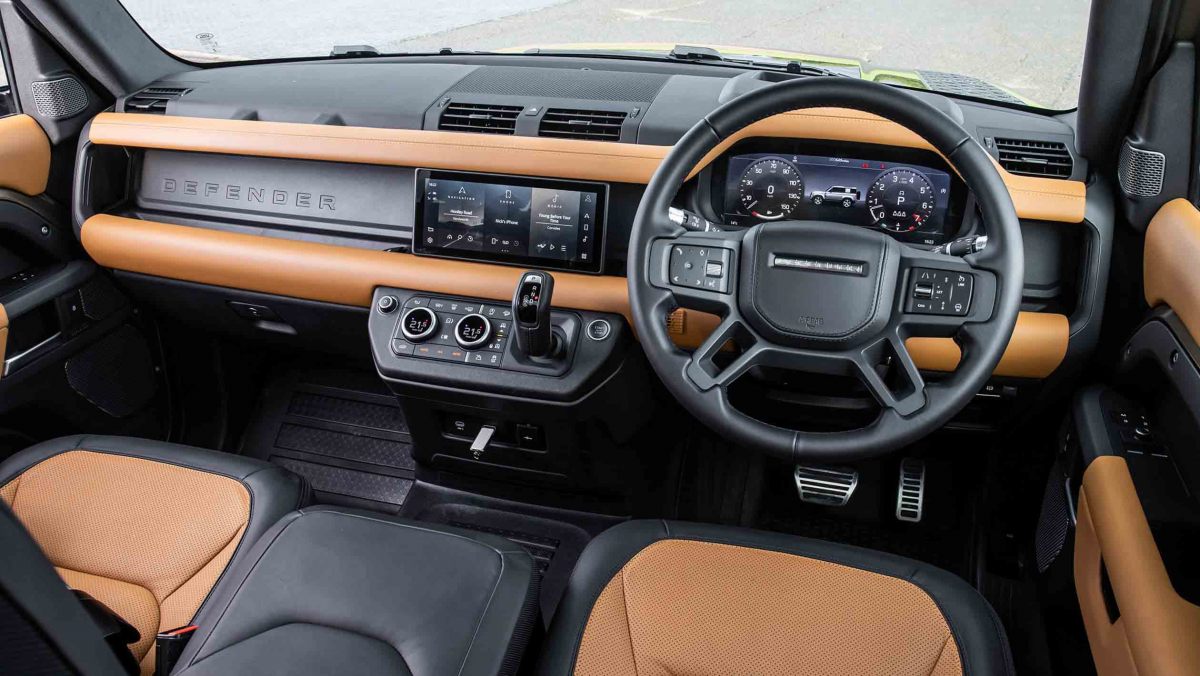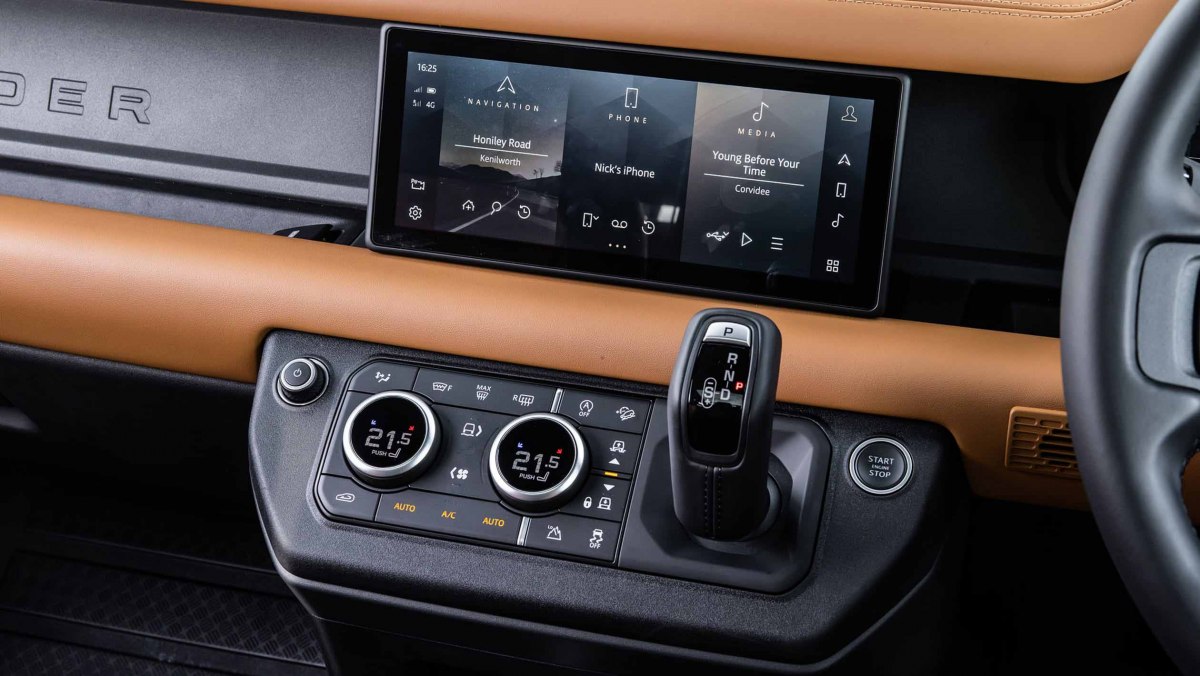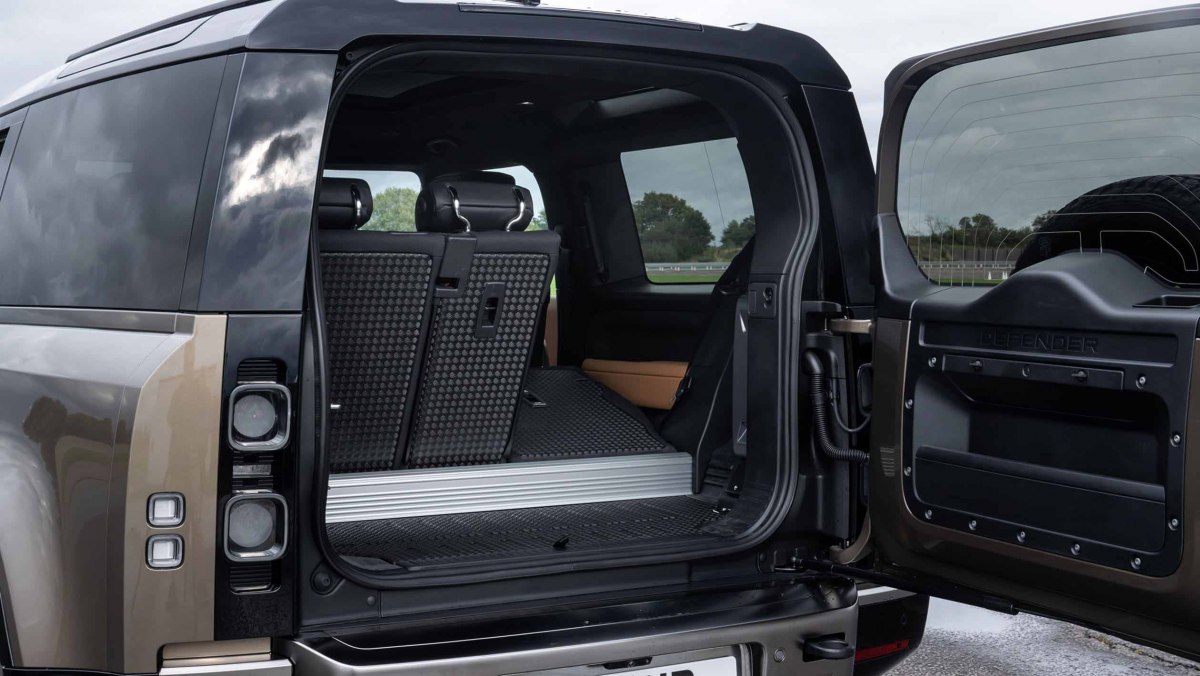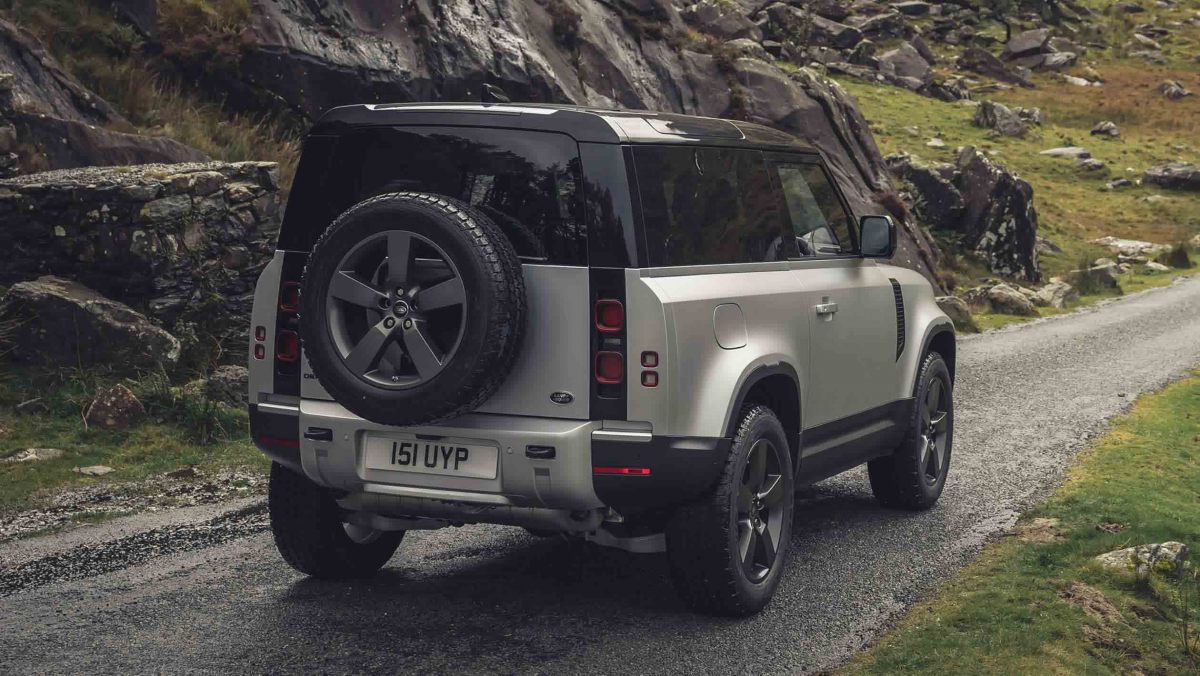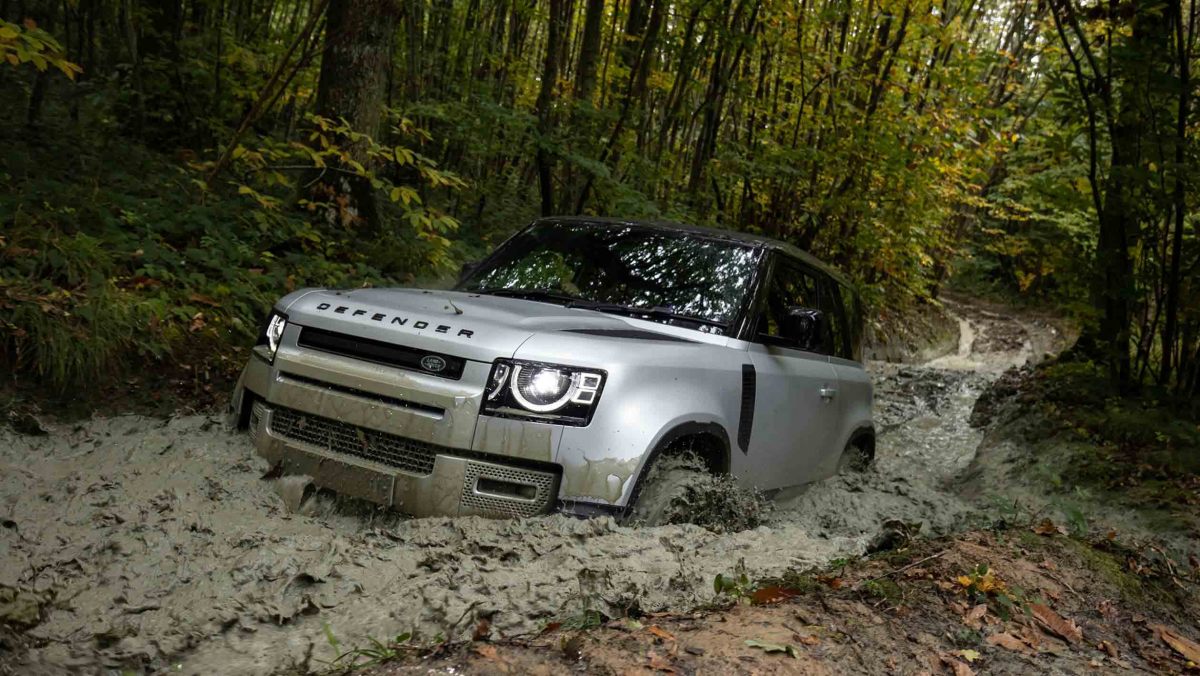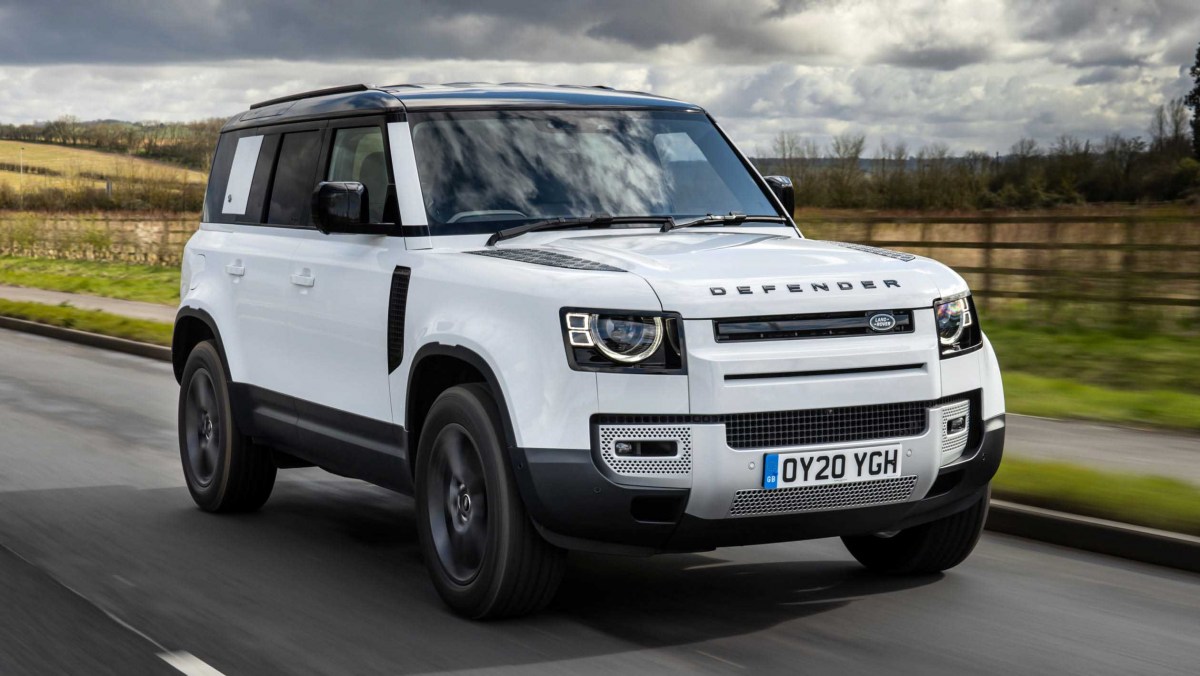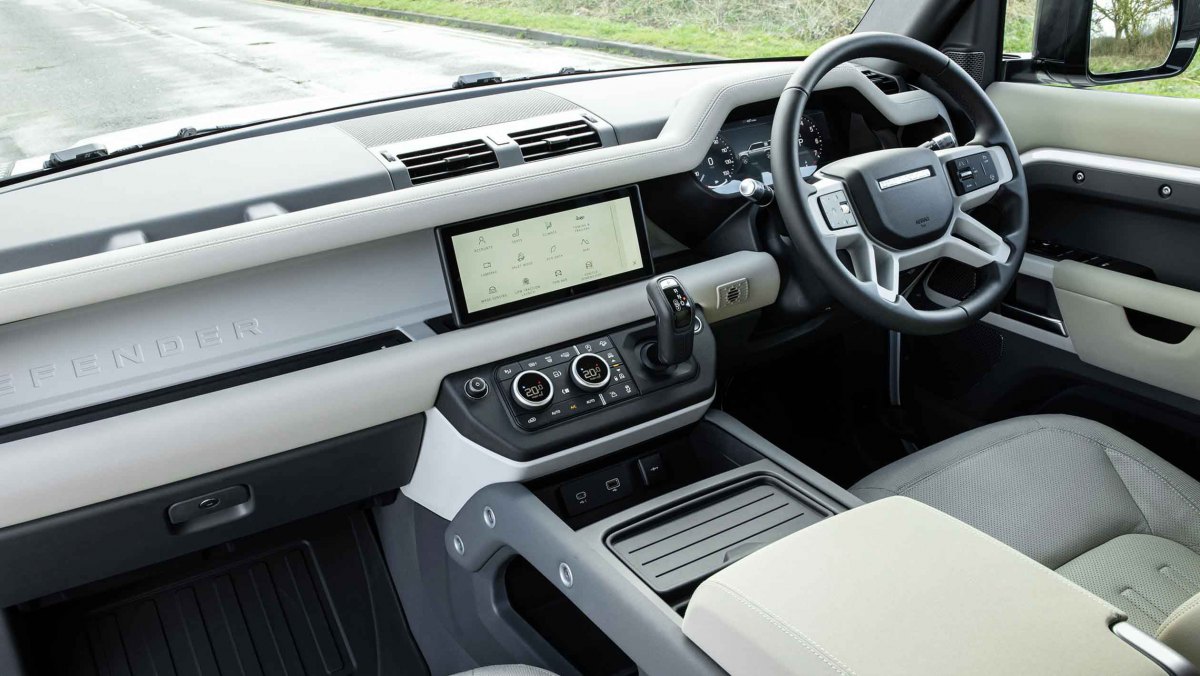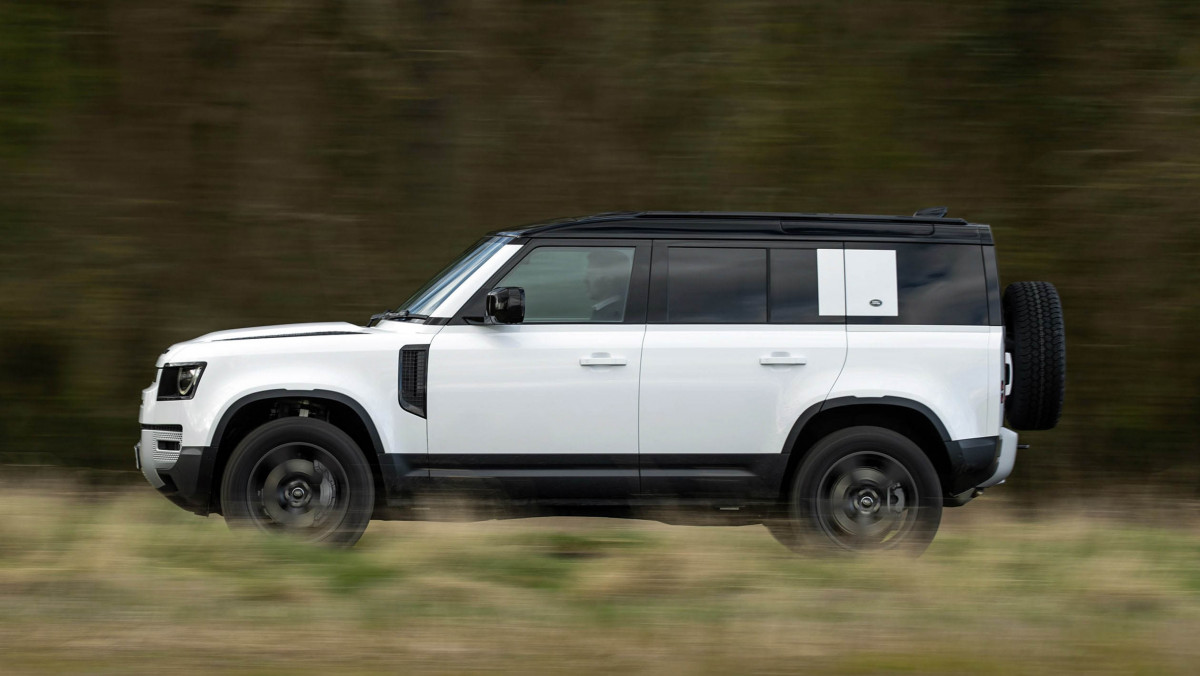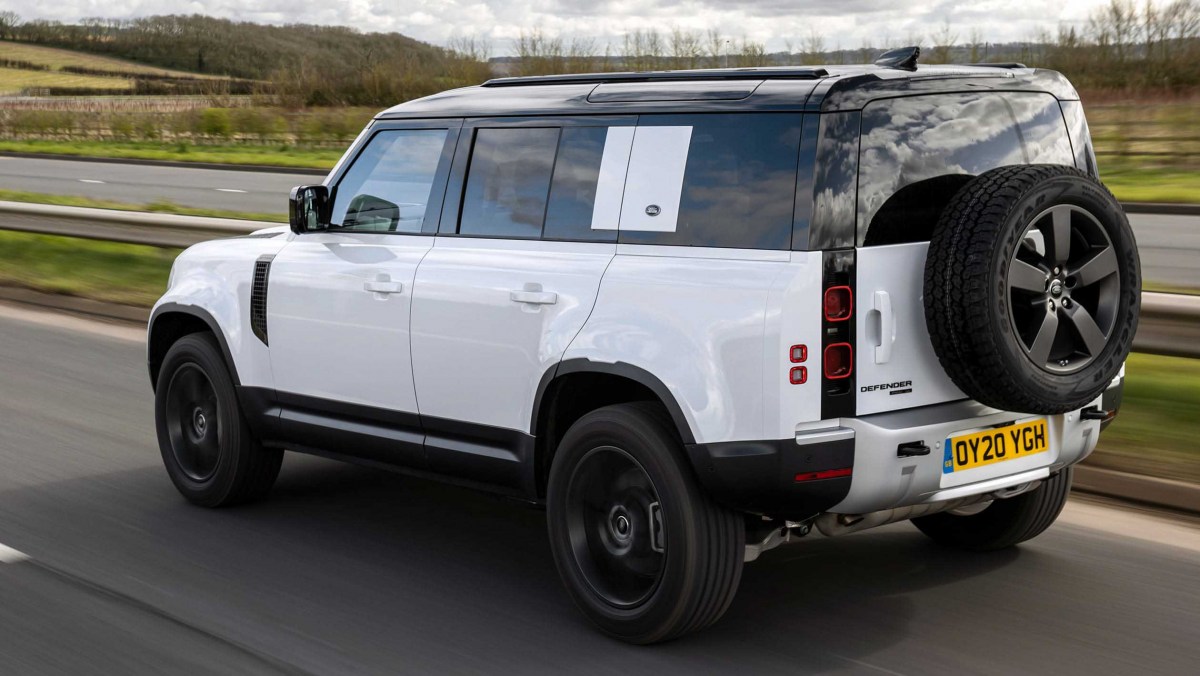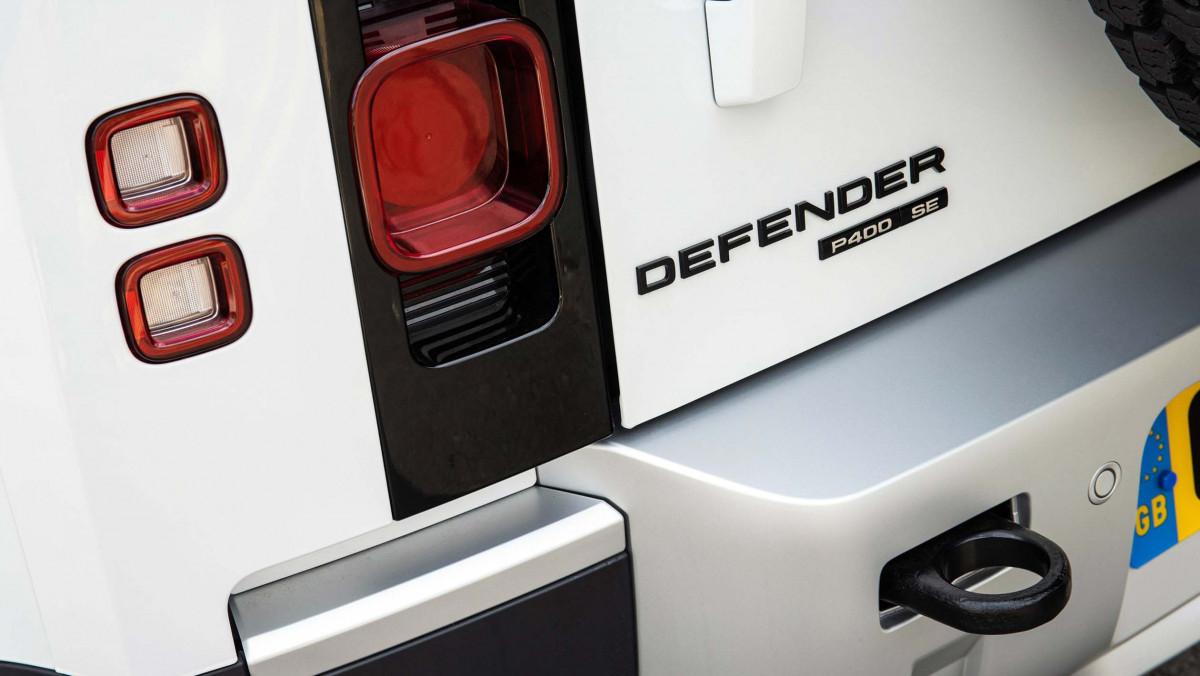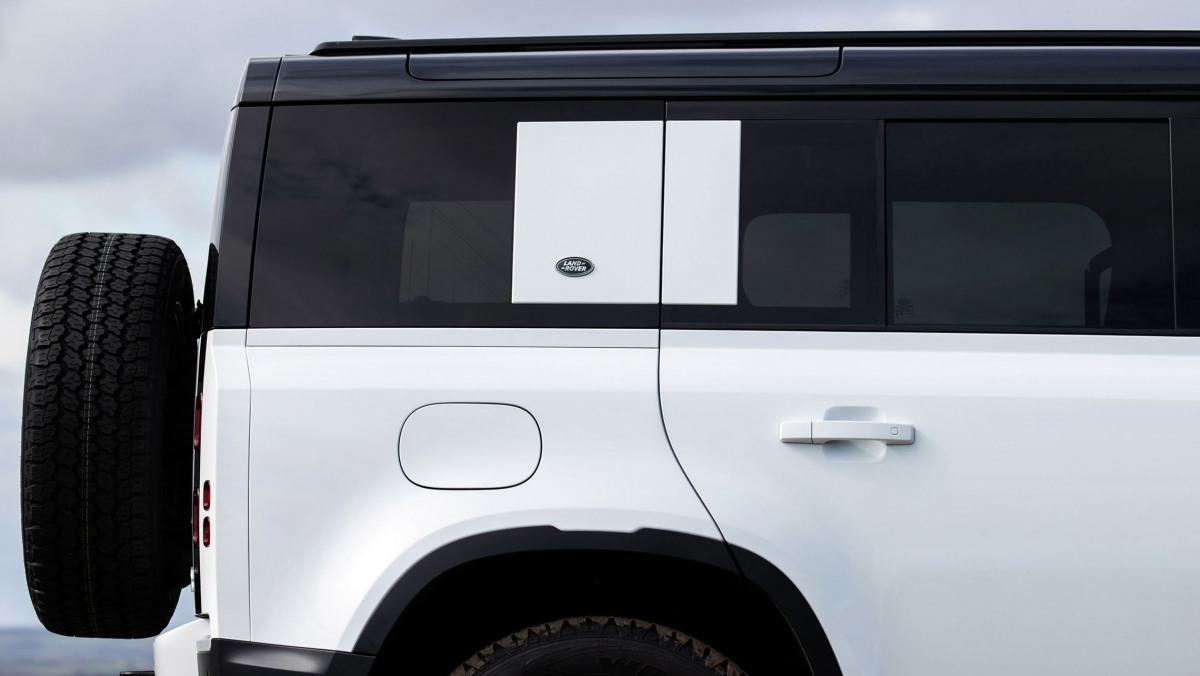The new Defender isn’t a typical evo car, but it’s something we’d gladly have sat in the garage next to one
| Versatility, intelligent design, impressive new in-line six powertrains, character | |
| Heavy, expensive, petrols are thirsty |
It’s not the car that will appear on many, if any, evo reader’s list of dream cars for a dream drive, but we’ve always said that the thrill of driving comes in all shapes and sizes, on and off road. There is also the chance that many of you have, or do own, a Defender, or one of its older relations, so we think you’ll be interested in how this all-new one fares.
Now, the new Defender might share a name and lineage with Land Rover’s iconic workhorse, but its technical make-up is very different this time around, ditching the old-school ladder-frame chassis for a thoroughly modern aluminium-heavy monocoque.
It’s available as both a five-door 110 and three-door 90, and has already undergone a big update for the 2021 model year by ditching all but one four-cylinder powertrain – a 296bhp petrol – and replacing them with a new range of mild-hybrid six-cylinder petrols and diesels, plus a new plug-in hybrid.
And the result is that, in short, it’s really rather good. A perfect example of what’s achievable when you set out to design and build a car fit for the purpose it’s meant for, rather than crudely adapting what you have in the parts store and pretending it’s something that it clearly isn’t. Rivals could learn a great deal from this approach.
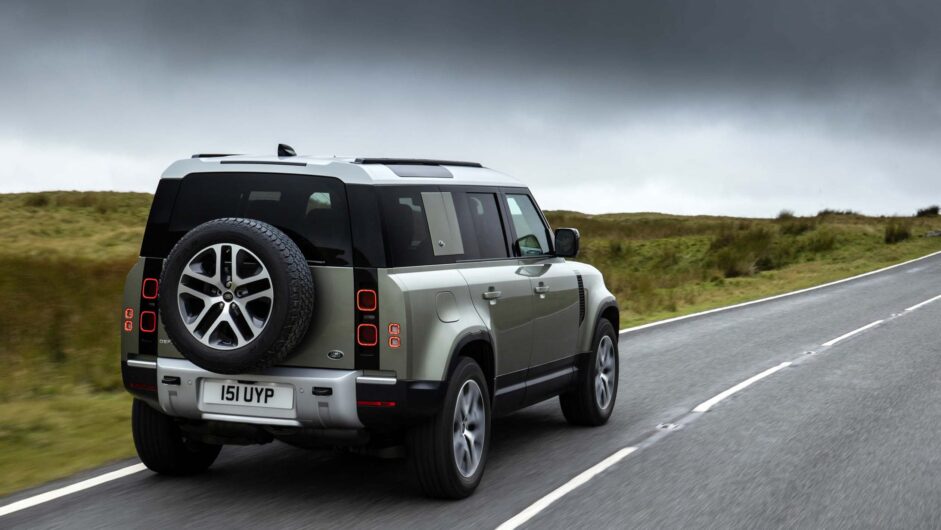
Prices, specs and rivals
Having had time to bed into the market, a year or so after its launch the Land Rover Defender range is now as diverse as the terrain it’s able to tackle. There are no less than six different engine options, in seven different trim levels, and those two aforementioned body shapes. Keeping things as simple as possible, there are three forms of Defender – the ‘base’ car, the X-dynamic, and finally the X. The Defender X is the fully loaded range-topping version, powered by either the top-specification petrol, diesel or plug-in hybrid powertrain. Its more sumptuous finishes inside and out include high-quality leathers, different trim for the exterior skid plates and bumper ends, darkened wheels and almost all of the option boxes ticked.
Beneath this point, both the standard Defender and X-dynamic models are then available with the full range of engines in S, SE and HSE trims, each with varying levels of equipment. There are certain engines that are and are not available with certain trim levels, but if you can’t find a match between powertrain and specification that you like, you’re probably being fussy.
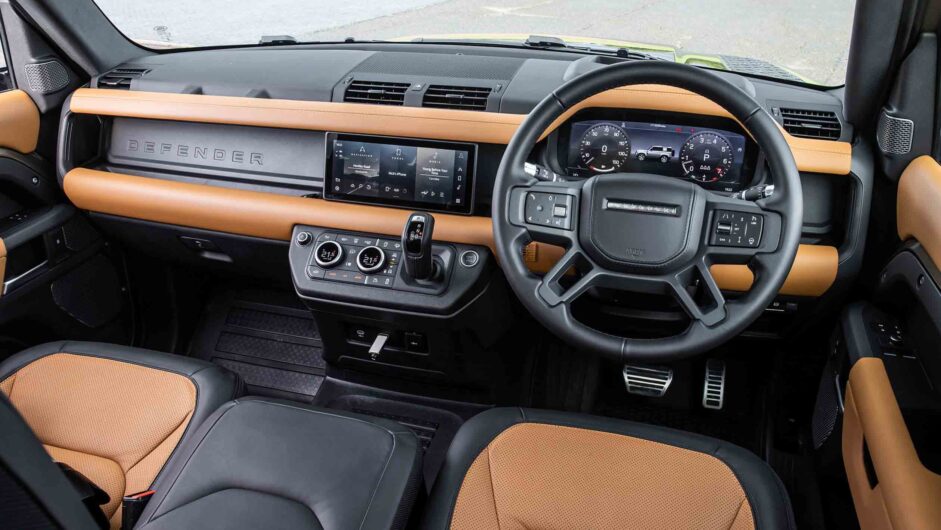
Because of the wide choice of engine, trim and body options, pricing between the different specifications covers a vast range. A basic Defender 90 D200 S with steel wheels and a hose-down floor is priced from $61,555, and expands all the way up to $116,931 for a Defender X 110 P400e plug-in hybrid. There’s also an extensive options list that can see your Defender crack six figures on top-spec models, and also a commercial version in both body options.
With so many models available, natural rivals could be anything from a mid-spec Toyota Hilux right through to the $135,712 Mercedes G-class, not to mention more traditional family SUVs such as Land Rover’s own Discovery 5 or even an Audi Q7. When considered against the G, the Defender feels light years ahead, despite the transformational driving characteristics Mercedes instilled in it following its comprehensive overhaul in 2018. So too Stuttgart’s other offerings, such as the new GLS, which starts at $102,955 for a 400D. While its focus on luxury will outscore the Defender, it’s unlikely to beat it off-road or in the charm stakes.
Audi, BMW, Bentley, Porsche, VW… none has dared to go diff lock to diff lock with the Defender in the past. Their problem now is that the Defender is able to match them on the road as well as beating them off it. And for those who dismissed Land Rover’s utilitarian model previously, they now have a strong reason to consider one.
Engine, gearbox and technical highlights
Despite it only being on sale for less than a year, Land Rover has gone about completely changing the Defender’s engine range, ditching all four-cylinder diesels for a set of replacement sixes, and introducing the plug-in hybrid powertrain from the Range Rover and Range Rover Sport. These join the existing four- and six-cylinder petrol engines, and all are now mild-hybrid except for that base four-cylinder petrol.
The bulk of regional sales are expected to be made up by the six-pot diesels, which are available in D200, D250 and D300 variants. Peak power in each is relevant to the model name, and torque is rated at 369, 420 and 480lb ft available as low as 1250rpm. As well as the obvious power and torque benefits of the larger engines, they’re also smoother, more refined and marginally more fuel efficient.
The P300 four-cylinder petrol is the least suited to the Defender, as it can struggle to move the considerable mass without feeling overwhelmed, and the 297bhp turbo unit suffers from the same issues as seen in other applications, namely its poor calibration to the transmission and general lack of refinement.
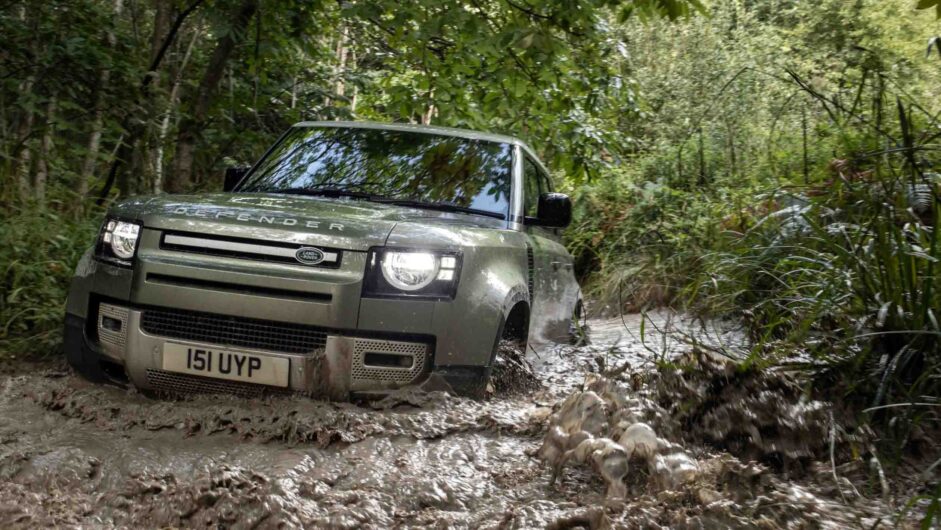
The P400 mild-hybrid is a better trade-off if you’re just not interested in a diesel option, with the 3-litre unit featuring both a conventional twin-scroll turbocharger and a 48V electric supercharger. Combined, these two elements produce 394bhp and 406lb ft of torque, making this the most powerful series-production Defender in its history. There’s also a belt-integrated starter motor in lieu of an alternator, with a 48V lithium-ion battery that stores recuperated energy as the car slows.
Finally, later this year Land Rover will begin production of the P400e plug-in hybrid, and although we’re yet to try the system in the new Defender, it’s impressively refined and just about powerful enough to overcome the extra weight gain in its other JLR applications. Drive in all models is via an eight-speed ZF automatic gearbox, with twin-speed transmissions providing both high and low ratios, the latter for towing and off-road fun.
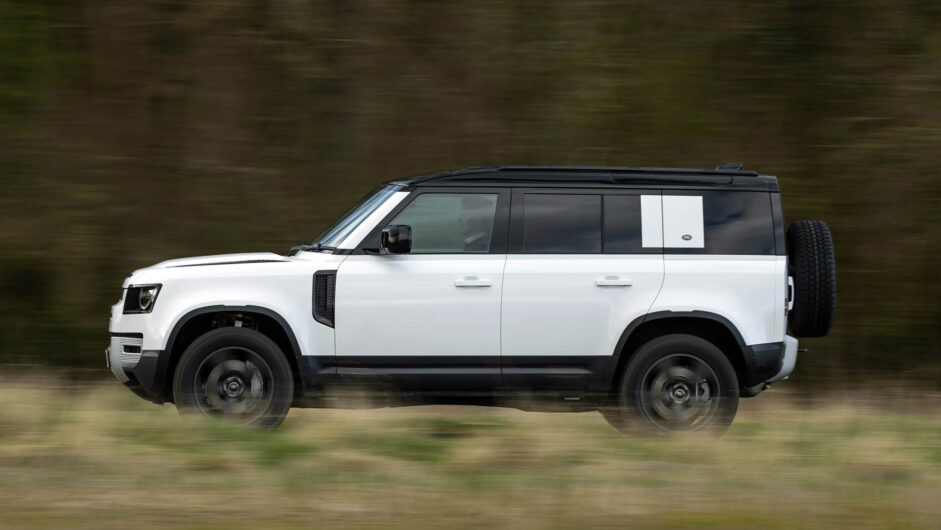
These different powertrain options are then connected to the most technologically advanced Defender yet. Built on an all-new aluminium monocoque chassis Land Rover calls internally D7x, the new Defender is available as a three-door 90 or five-door 110, as well as a commercial vehicle. The 110 is available with three seating configurations: five, six, or a five + two, with the 90 limited to a maximum of half a dozen seats. Beneath Gerry McGovern’s design is the full complement of technical kit to take the Defender anywhere it cares to go. There’s a two-speed transfer ’box within the eight-speed auto, centre- and rear-locking differentials and, of course, permanent four-wheel drive.
Independent multi-link double wishbone suspension is fitted at the front, with an integral link axle at the rear, while air suspension is standard across the 110 range, with the X model also featuring as standard an electronic differential, Terrain Response 2, configurable terrain response – think driver modes for sports cars but for a car designed for bog snorkelling rather than lap times – and all-terrain progress control (an off-road cruise control system).
Performance and 0-100 time
Compare the new Defender to its predecessor and its on-road performance will quite simply blow you away. Even at its least powerful, the 110 D200 will reach 100kph in 9.8sec, with the D250 taking nearly two seconds off that time at 8.0sec dead, and the D300 doing the sprint in just 6.7sec.
What the numbers don’t portray is how much more easily they are reached with the new six-cylinder diesel in place of the old four-pot. Gone is the grumbly workhorse, and in its place a far more grown-up powertrain that, although lacking a bit of charm, really makes for an ideal match to the Defender’s personality.
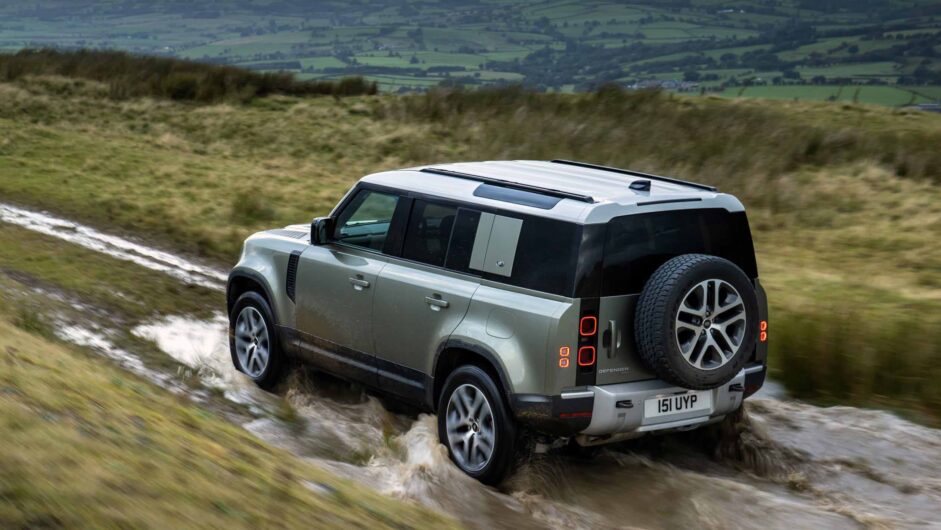
The only weak link in the range is the P300 petrol’s 7.1sec 0-62 time, which sounds impressive, but on the road the effect is dimmed by the need to really work the four-cylinder to make progress. The P400 straight-six will do the same sprint a second quicker at 6.1sec, and goes about it with more ease, even if it’s still not as well suited as the diesels. Yet for all the P400’s performance gusto, the fastest Defender for the moment is actually the plug-in hybrid, which uses its instantaneous torque to reach 100kph in just 5.4sec. What that feels like in a car approaching 2.7 tons, however, we’re yet to experience.
What’s important to reiterate in the new Defender though is not the importance of on-paper acceleration times, but rather that it now rarely feels underpowered. Its performance is ample, and no more is really needed in this sort of vehicle. Of course, Land Rover will soon release a further petrol V8 variant to appeal to those with a G63 AMG also on their shopping list, but for everyone else the current engine range has more than enough choice.
Ride and handling
Quite simply, the new Defender drives nothing like the old one, which some of you will be more than happy about, while others will head straight outside to hose out the interior of their ‘real’ Defender. But it’s 2021 and having a car that drove like it was designed to survive being dropped from a plane makes for a lovely piece of nostalgia, but not such a great car.
In the new Defender you’re driving a car that works on road as well as it does off it. It doesn’t lurch around or pitch itself into a corner or around a motorway slip road curve with the grace of an elephant on skates. It almost drives like a normal car.
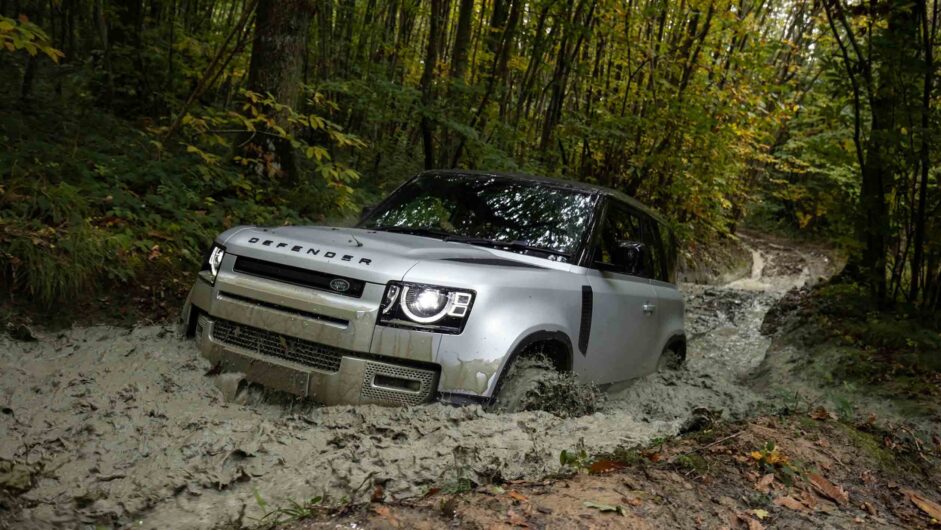
There’s a suppleness to its ride quality that puts a Discovery 5 to shame and its body control is superior, too. It certainly responds to being hustled along better than the 5, and aside from the slightest evidence of vagueness from the steering around the dead ahead when the optional off-road tyres are fitted, you find yourself travelling quicker than expected.
The thump from the straight-six engines helps considerably here, neither troubled by the high kerb weight nor aerodynamics that probably raised a snigger from the wind tunnel operators. Its step-off from stationary is instant, the mid-range punchy and responsive beyond all expectations, and it even enjoys troubling the red line. Unlike its predecessor and so many of its ilk, it lets you set the pace rather than dictate it.
For those long road trips and too far away places that Defenders are drawn to, the road part will no longer be a chore. Your overriding impression of the new Defender is just how complete it feels. How nothing has been compromised or sacrificed and every need has been catered for. It will still crawl up a rock face or submerge itself in a bog and haul itself out the other end, but crucially it will no longer suck the life out of you when you need to travel any distance on a road.
L/100km and running costs
It will probably not surprise you to know the likely associated costs of running a new Defender are, like the rest of its numbers, big. Thanks to an EU weight of between 2140kg and 2708kg, it’ll chew through wear and tear components such as tyres, bushes and its brake hardware faster than lighter rivals.
The other effect of big weight figures is high fuel consumption, and across each of the petrol and diesel power ranges there’s generally the same amount of fuel used regardless of output. Both petrols are rated on paper to around 24-12.8 L/100km, although anything in the 20s in our experience is a good result. Diesels then range between 8.8 and 10 L/100km, depending on specification, but again consumption in the real world is more like 11.3-10.8 L/100km.
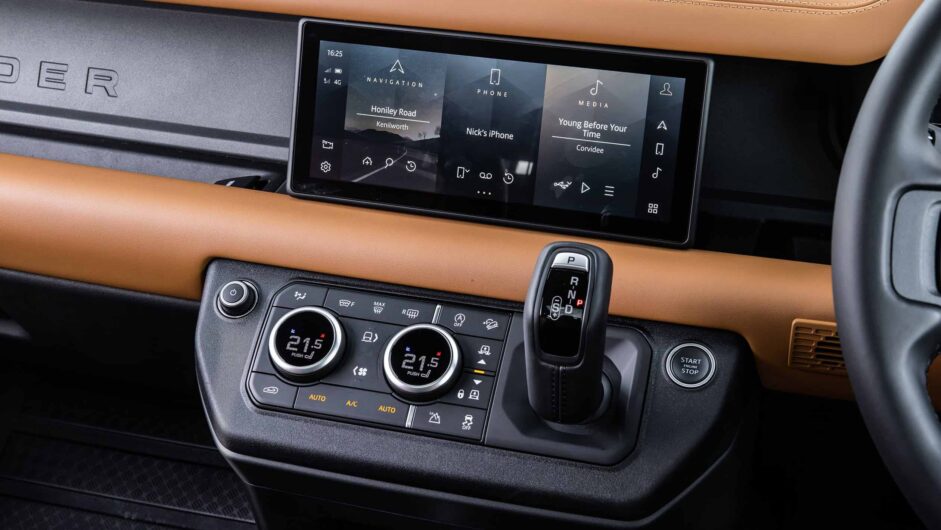
The reason for this broad equalisation is that the more powerful engines might inherently consume more fuel, but less powerful models have to work just that much harder to actually make progress.
The only unknown at this stage is the P400e plug-in hybrid, which has a 2.8 L/100km on-paper rating, and a 50-odd kilometer electric range. Given the similar weight stats to the Range Rover plug-in, we’d suggest this would be more like 32 kilometers in the real world, with the car dipping to the mid-14.1 L/100km range when used as a typical hybrid.
Interior and tech
A key aspect of any Defender has always been its versatility and ruggedness inside the cabin, something the new model captures extremely well but with new levels of comfort, tech and even luxury if specified as such.
The interior’s overall design is based on such versatility, with a simple horizontal dash that incorporates a standard infotainment touchscreen situated above a compact group of physical controls that handle heating and ventilation, the terrain response system and a volume knob. This section also includes the joystick-style gear selector, and all together allows for three different interior layout options that are available across the range. As standard, most models come with the usual centre console, but this can be swapped out for a central jump seat, making this a two-row six-seater, or be removed altogether, creating a walk-through cabin.
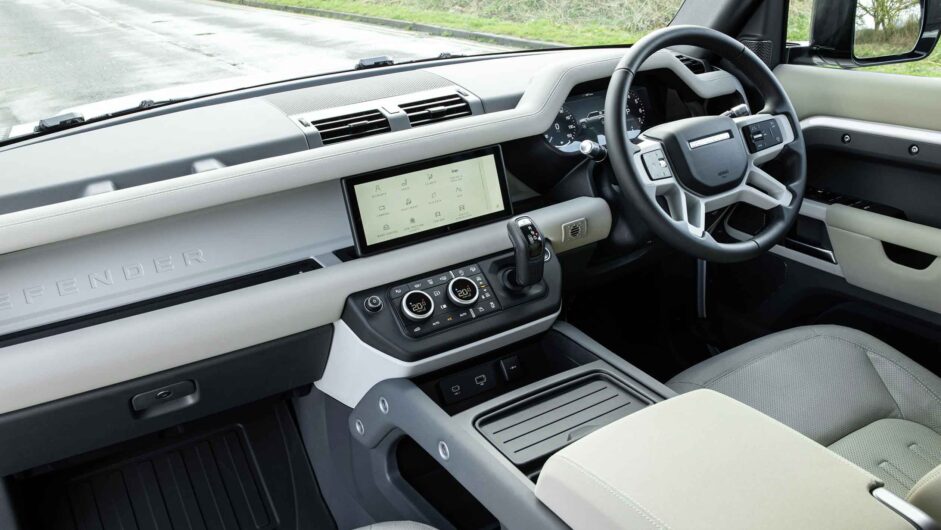
This level of creative thinking has been applied throughout other parts of the cabin, too, with its clever combination of tough, hard-wearing plastics and fabrics, creative use of exposed painted metal on the doors and dash, plus the option of a full hose-down interior. The specification choices also allow for a big variation in cabin ambience too, with high-spec X models incorporating luxurious materials into the otherwise rugged cabin.
Tech also rates highly, with Land Rover’s new Privi infotainment system light years ahead of the systems found in older JLR products, while clever integration of new technology such as its camera systems, the virtual rear-view mirror and one of the most comprehensive digital off-roading toolkits make it feel like a real step forward for an off-roader.
The clever bit of all this is that no model, whether an S or a top-spec X, feels like anything other than a Defender. It’s clever roof lights, while small, are still an important nod to its predecessor, while the sheer variety of roof and interior design options make it easy to specify one exactly to your taste.
Design
The element tying all of the Defender’s good points together is its design. There was always a risk when recreating an icon such as the Defender, and in many ways Land Rover has hit the right balance of referencing the original, without becoming a pastiche of retro design.
It was crucial to see design elements such as the completely flat tail, roof lights and subtle, but unmistakable, shoulder line reach the new model intact. But what is more of a surprise is how many design flourishes Gerry McGovern’s team at Land Rover applied.
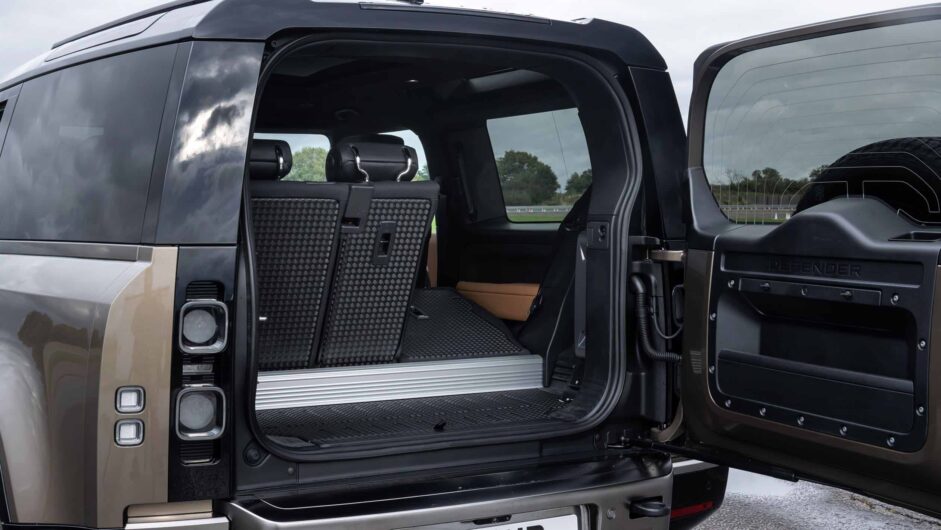
For those hoping for a more rugged approach to the ultimate off-roader, other reborn off-roader icons such as the G-class and Bronco might appeal more, but it’s clear Land Rover has understood that the bigger customer base lies in designing its Defender with a wider appeal.
If there is one caveat to the Defender’s design, it would be that in certain specifications, and in certain colours, the off-roader design might stray too far from home, looking long, saggy and under-wheeled when in its loading height (which it automatically reverts to when parked if fitted with air springs). Still, in almost all cases the Defender is a triumph in design, which should help it become a triumphant success for Land Rover.
This article originally appeared at evo.co.uk
Copyright © evo UK, Dennis Publishing

